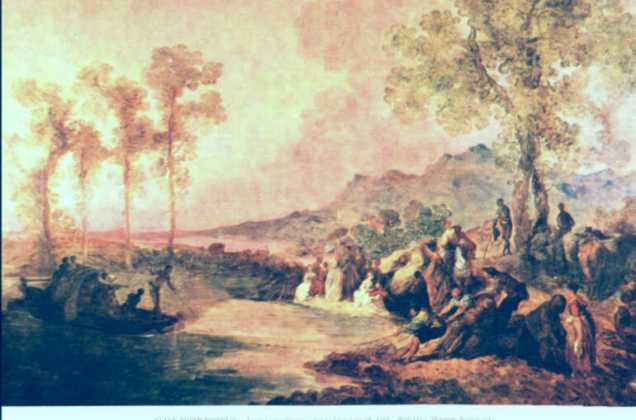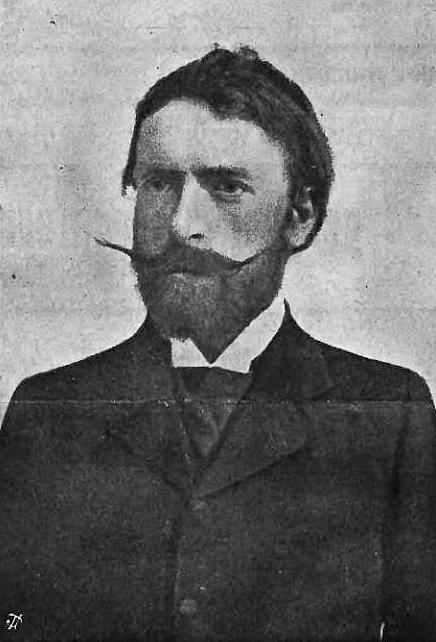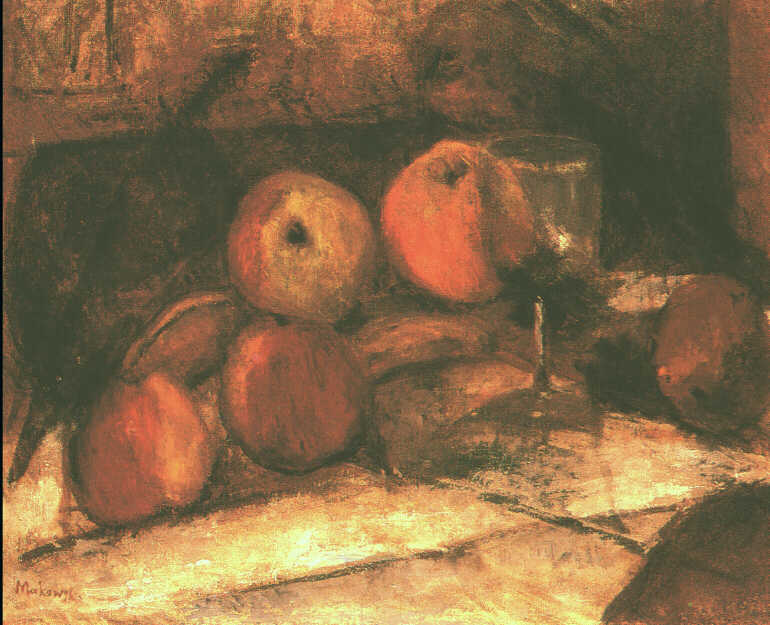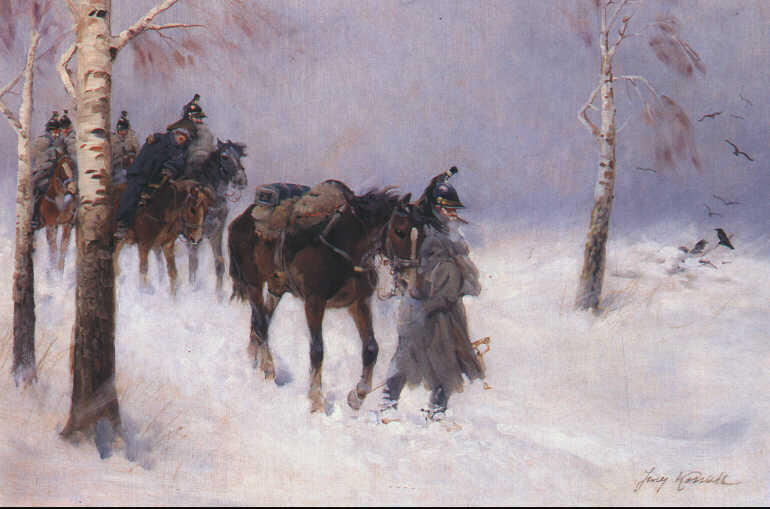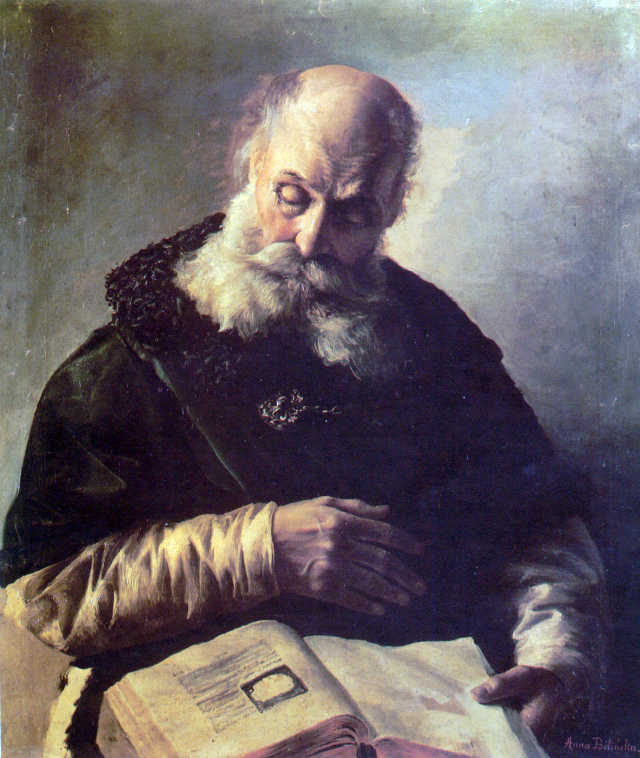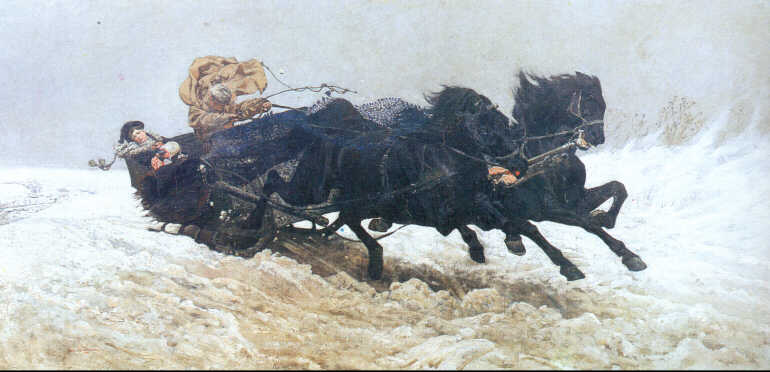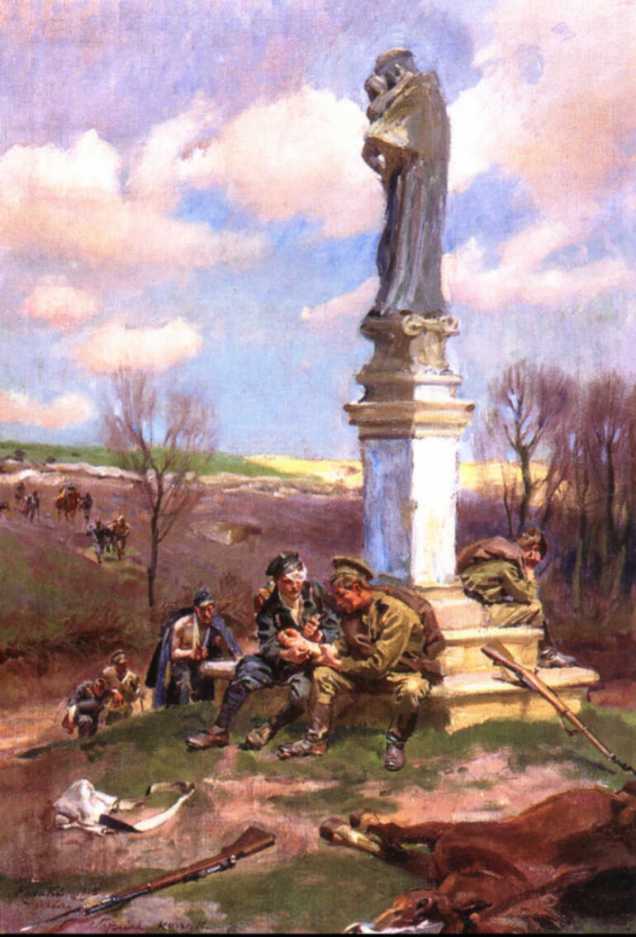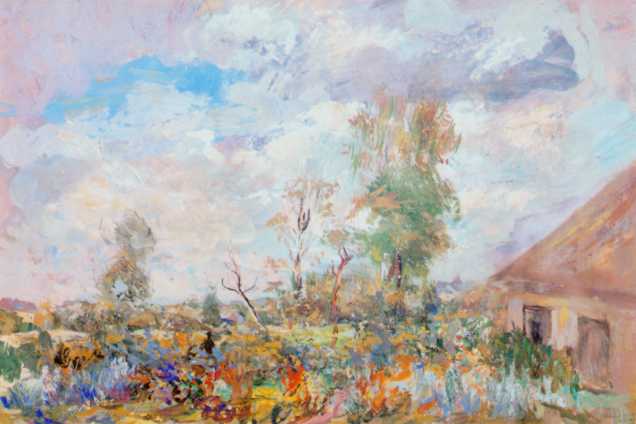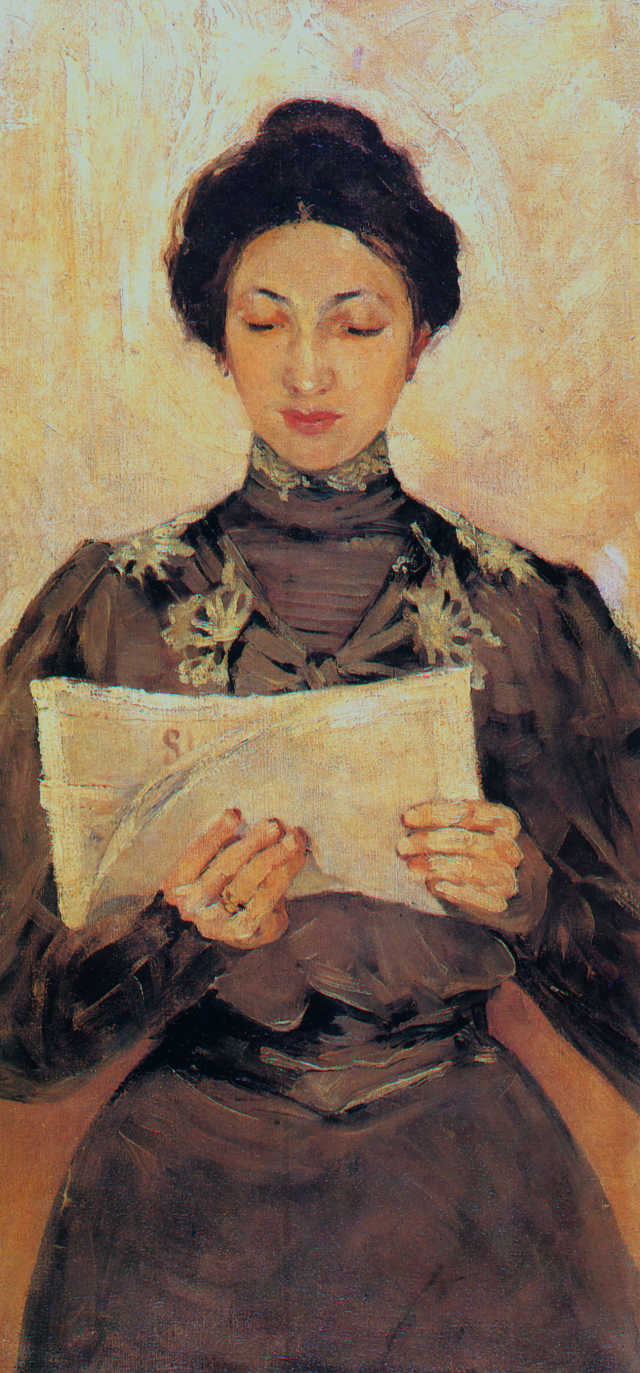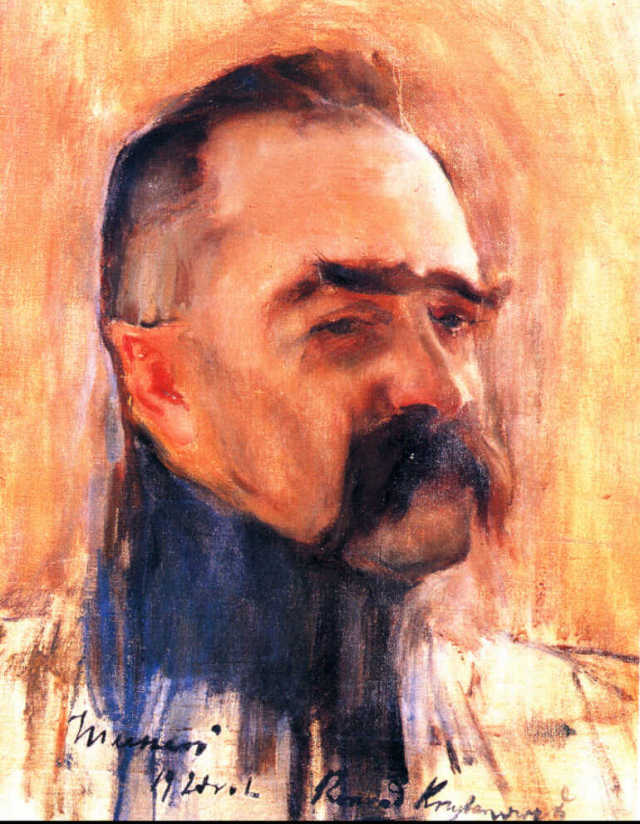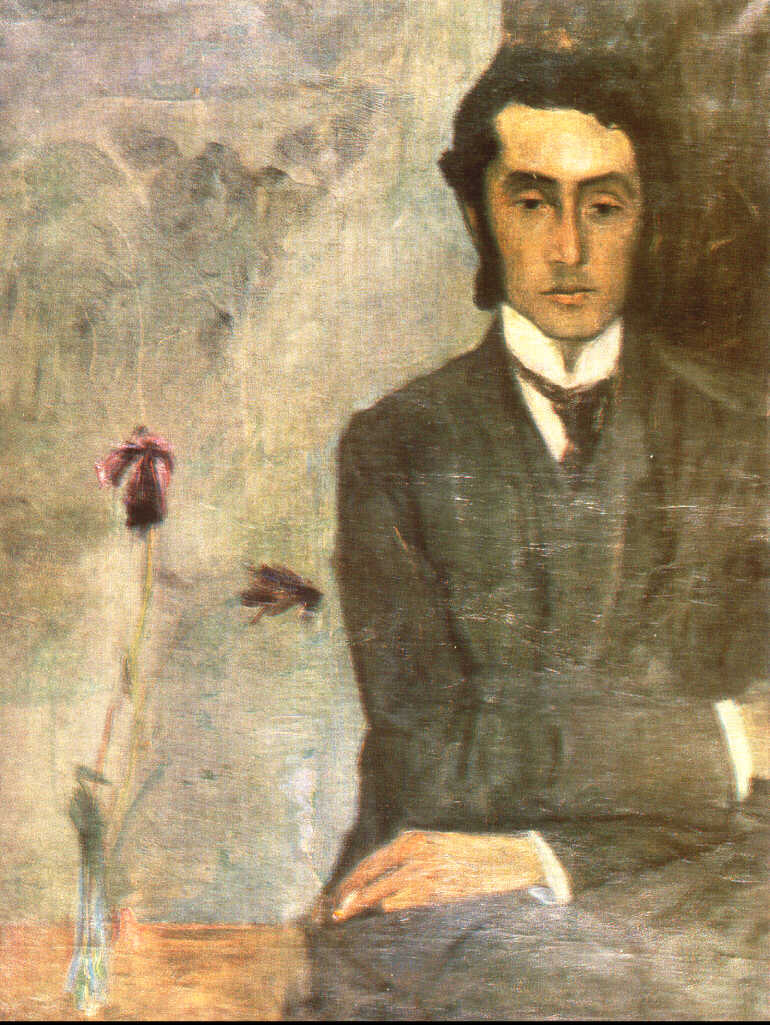Masłowski Stanisław (ur. 1853 Włodawa, zm. 1926 Warsaw).
Stanisław Masłowski was a student of W.. Gerson to A. Kamieński in the Warsaw Drawing Class. After graduation, he permanently lived in Warsaw, from where he went to painting open-air every year, m.in. to Ukraine in the years 1875-1886. The fascination with the local landscape and folklore caused, that at that time he painted many genre paintings with the figures of Cossacks (The dance of the Cossacks, Dumka Jeremy). W 1886 r. he was in Munich; after 1900 he traveled to Italy and Paris several times; w 1912 he traveled to Sicily and Tunis. After 1903 r. He spent a lot of time in Wola Rafałowska near Warsaw. Apart from oil painting, he practiced watercolors and achieved true mastery in this difficult technique. In his watercolor-painted landscapes – realistic, and decorative at the same time – he was giving, in your own words, “something like a synthesis of the Polish landscape”.
Stanisław Masłowski was a student of W.. Gerson to A. Kamieński in the Warsaw Drawing Class. After graduation, he permanently lived in Warsaw, from where he went to painting open-air every year, m.in. to Ukraine in the years 1875-1886. The fascination with the local landscape and folklore caused, that at that time he painted many genre paintings with the figures of Cossacks (The dance of the Cossacks, Dumka Jeremy). W 1886 r. he was in Munich; after 1900 he traveled to Italy and Paris several times; w 1912 he traveled to Sicily and Tunis. After 1903 r. He spent a lot of time in Wola Rafałowska near Warsaw. Apart from oil painting, he practiced watercolors and achieved true mastery in this difficult technique. In his watercolor-painted landscapes – realistic, and decorative at the same time – he was giving, in your own words, “something like a synthesis of the Polish landscape”.
Mallows in the garden, 1911
watercolor, papier, 99 x 64 cm (in the light of the passe-partout);
signed lower right: ST MASŁOWSKI | 911;
watercolor, papier, 99 x 64 cm (in the light of the passe-partout);
signed lower right: ST MASŁOWSKI | 911;
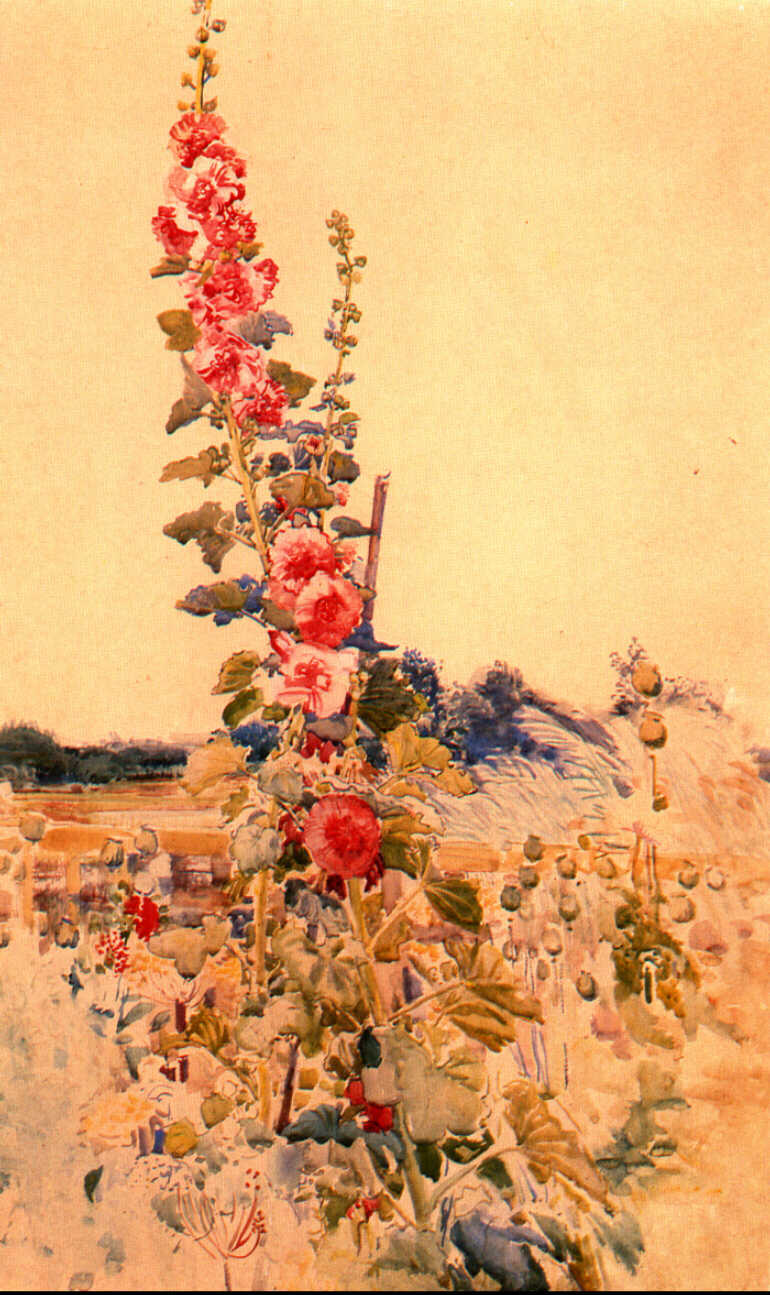
Watercolor Mallows in the garden, dated to a year 1911 – “year of creation (…) a whole range of top-class watercolor landscapes” painted by Masłowski during his summer stay in Wola Rafałowska, from where he wrote to his son: “Mallows in the garden are blooming pink and the oleander has also come out” (list z 9 VIII 1911; cyt. for: M. Masłowski, Stanisław Masłowski. Resume and creative materials, Wrocław 1957, s.261).
Spring of the year 1905
signed lower right: STANISŁAW MASŁOWSKI | WARSAW;
National Museum in Warsaw;
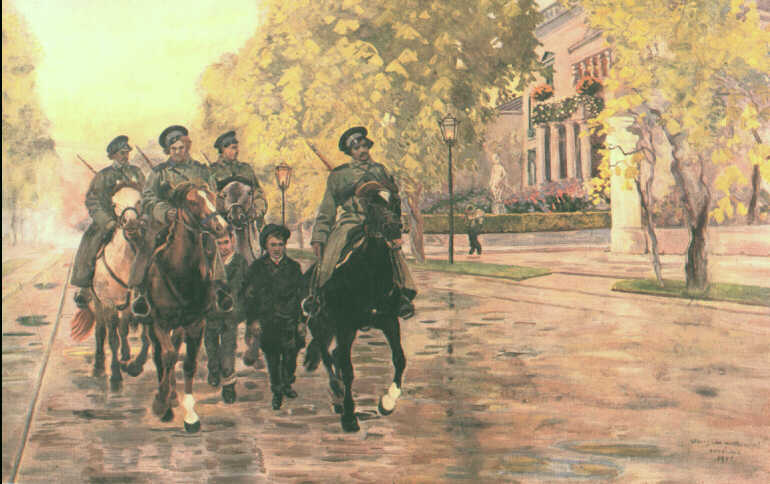
signed lower right: STANISŁAW MASŁOWSKI | WARSAW;
National Museum in Warsaw;

Seemingly, not much is happening in this lightly painted picture, “impressively”, saturated with fresh spring greens. We are located in Aleje Ujazdowskie in Warsaw, among the palaces and gardens of the aristocracy.
A tightly focused group of riders move in the middle of the Alley. They are Cossacks, and between them – as if specially shielding from the eyes of a few passers-by – two civilians are walking. They are the arrestees; perhaps participants of a demonstration that was just smashed by the army of a revolutionary-patriotic street demonstration, one of many, what in turbulent years 1905-1906 took place in many cities of the Kingdom of Poland. The tsarist authorities dealt with the demonstrators in an extremely cruel manner, mainly with the help of these, so peaceful now, Cossack cavalrymen.
A tightly focused group of riders move in the middle of the Alley. They are Cossacks, and between them – as if specially shielding from the eyes of a few passers-by – two civilians are walking. They are the arrestees; perhaps participants of a demonstration that was just smashed by the army of a revolutionary-patriotic street demonstration, one of many, what in turbulent years 1905-1906 took place in many cities of the Kingdom of Poland. The tsarist authorities dealt with the demonstrators in an extremely cruel manner, mainly with the help of these, so peaceful now, Cossack cavalrymen.

